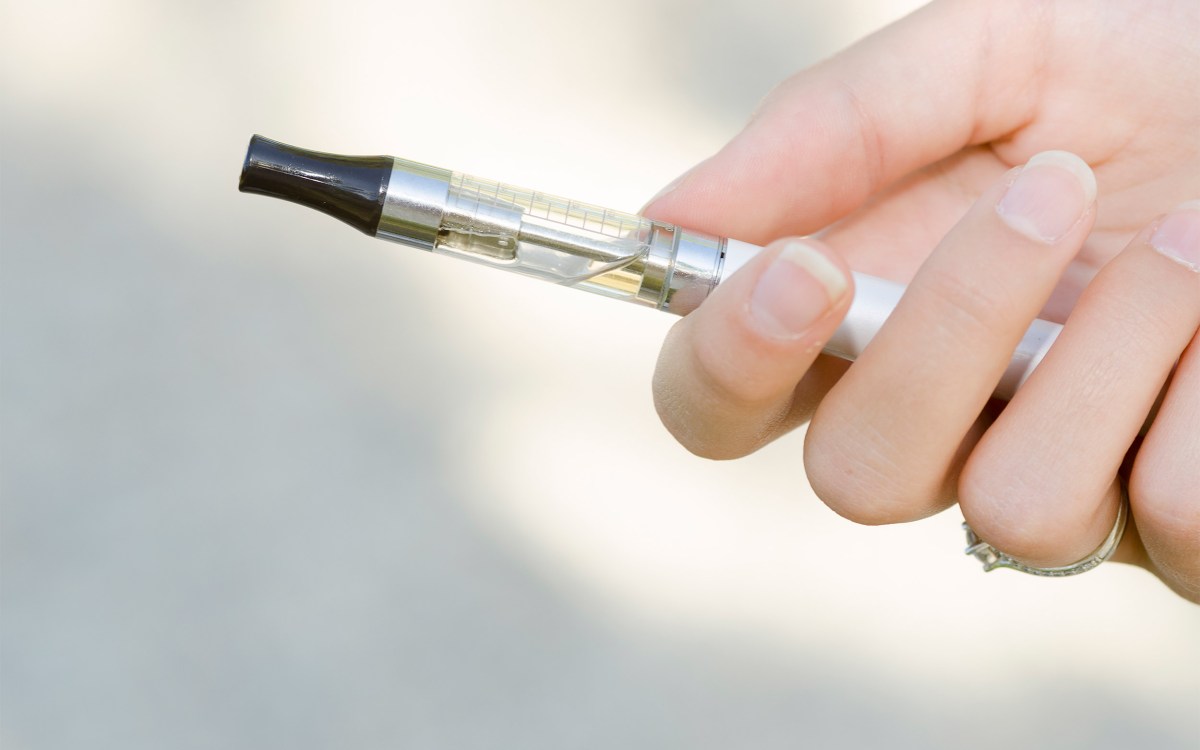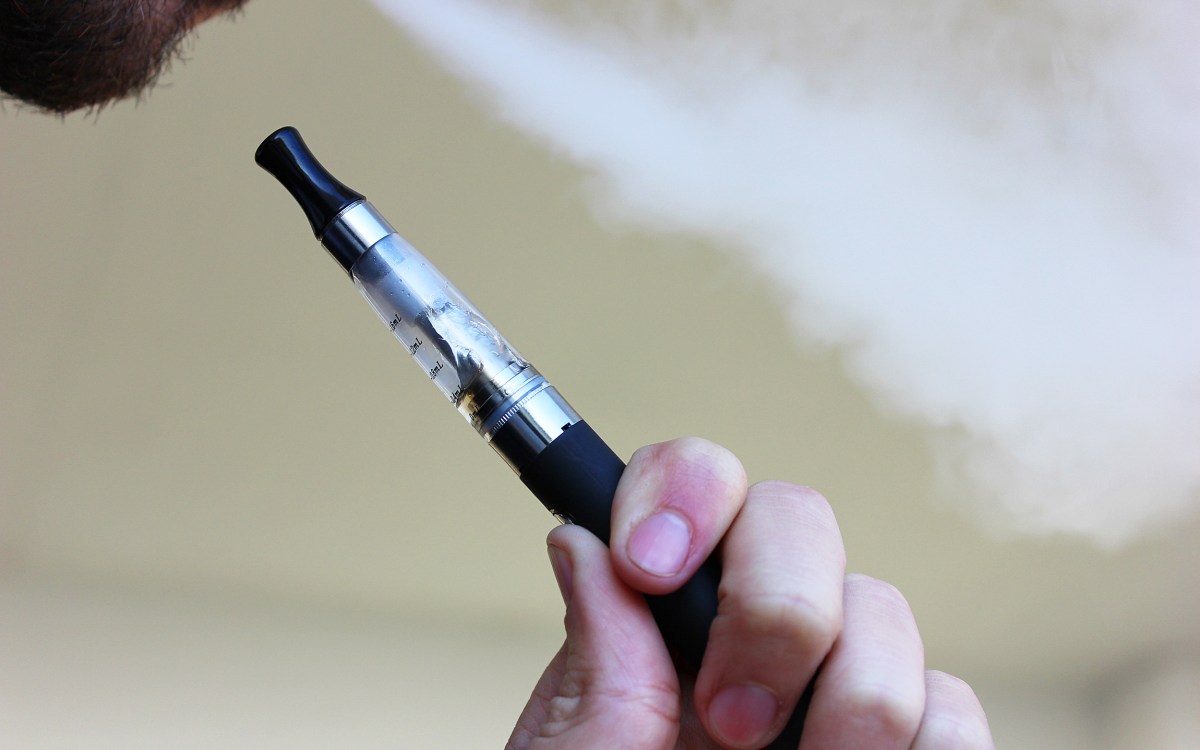
Photo by Kent Dayton
Pod-based e-cigarettes efficiently addictive
High-dose delivery of nicotine may foster greater dependence than other types of e-cigarettes
JUUL and similar pod-based e-cigarettes’ efficient delivery of nicotine may foster greater dependence than other types of e-cigarettes, according to a new study by Harvard T.H. Chan School of Public Health.
The pod-based e-cigarettes have been popular with teenagers and young adults since they came on the market in 2015, but little has been known about their health effects. A new systematic review led by researchers at the Harvard Chan School found that while the products may contain lower levels of harmful ingredients than conventional cigarettes, there is no evidence that even these lower levels are safe for youth.
This is the first paper to synthesize research findings on pod-based e-cigarettes, said first author Stella Lee, formerly a National Cancer Institute Cancer Prevention postdoctoral fellow in the Department of Social and Behavioral Sciences and currently an assistant professor at Konkuk University in South Korea.
“We found that pod-based e-cigarettes have a higher potential to get youth and young adults addicted than other devices,” she said. “To prevent this from happening, we need stronger health communication messages that alert people to these findings.”
The study will be published online June 1 in JAMA Pediatrics.
Pod-based e-cigarettes are sleekly designed and easy to conceal. Users pop in replaceable nicotine cartridges that come in appealing flavors like mango and mint. JUUL has dominated retail sales, although other pod-based products are now on the market, including Suorin, Bo, Phix, and Vuse Alto. Recent data have shown that e-cigarette use in adolescents has increased substantially since the introduction of pod-based e-cigarettes, prompting the U.S. Surgeon General to declare youth vaping an epidemic.
According to the new study, the design of pod-based e-cigarettes ensures the delivery of high doses of nicotine in a low pH form, which is less harsh compared to the higher pH nicotine found in most other e-cigarette brands, thus encouraging deeper inhalation. In one study, the level of nicotine exposure in adolescents (as measured by urinary cotinine) using JUUL or other brands of pod-based e-cigarettes was higher (245 ng/ml) than levels detected in adolescents who smoked regular cigarettes (155 ng/ml). Study findings also suggested that adolescents using pod-based e-cigarettes were more likely than other e-cigarette users to vape daily and to have more symptoms of nicotine dependence.
For this study, the researchers reviewed recent peer-reviewed scientific literature on pod-based e-cigarettes. They identified 35 English-language articles that presented primary data on pod-based e-cigarettes from June 2015 to June 2019. Studies looked at product design and biological effects, marketing and social media messaging, and population use and perception.
The researchers also found that pod-based e-cigarette social media marketing campaigns have targeted youth and young adults more than campaigns for other e-cigarette devices. Messages focused less on use of these products as smoking cessation devices and more on ease of use and lifestyle appeal.
The researchers were surprised to find that no study has yet focused on knowledge and perceptions of pod-based e-cigarette use among parents of teenagers, said senior author Andy Tan, assistant professor in the Department of Social and Behavioral Sciences. “Learning parents’ perspectives and their information needs around pod-based e-cigarettes is important to address the vaping epidemic among young people,” he said. “This is because we will then be able to empower parents with accurate information and tools to communicate with their children that pod-based e-cigarettes are extremely addictive, and to avoid using these products.”
Other Harvard Chan School authors of the study included Vaughan Rees, Noam Yossefy, and Karen Emmons.
This study was supported by a gift from Roslyn and Lisle Payne, and by awards R25CA057711 and 2T32CA057711-26 from the National Cancer Institute of the National Institutes of Health.









